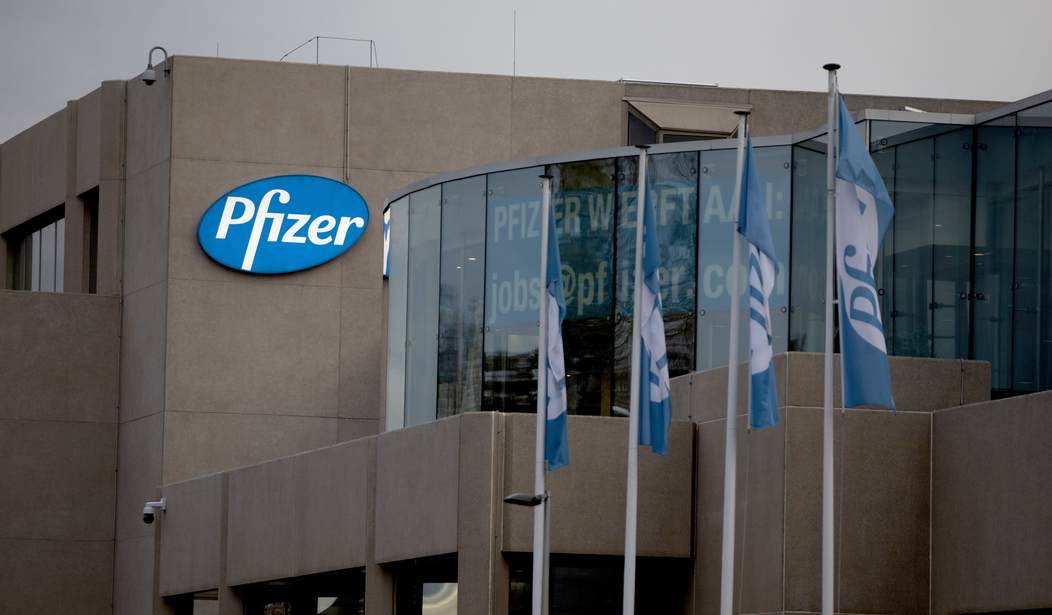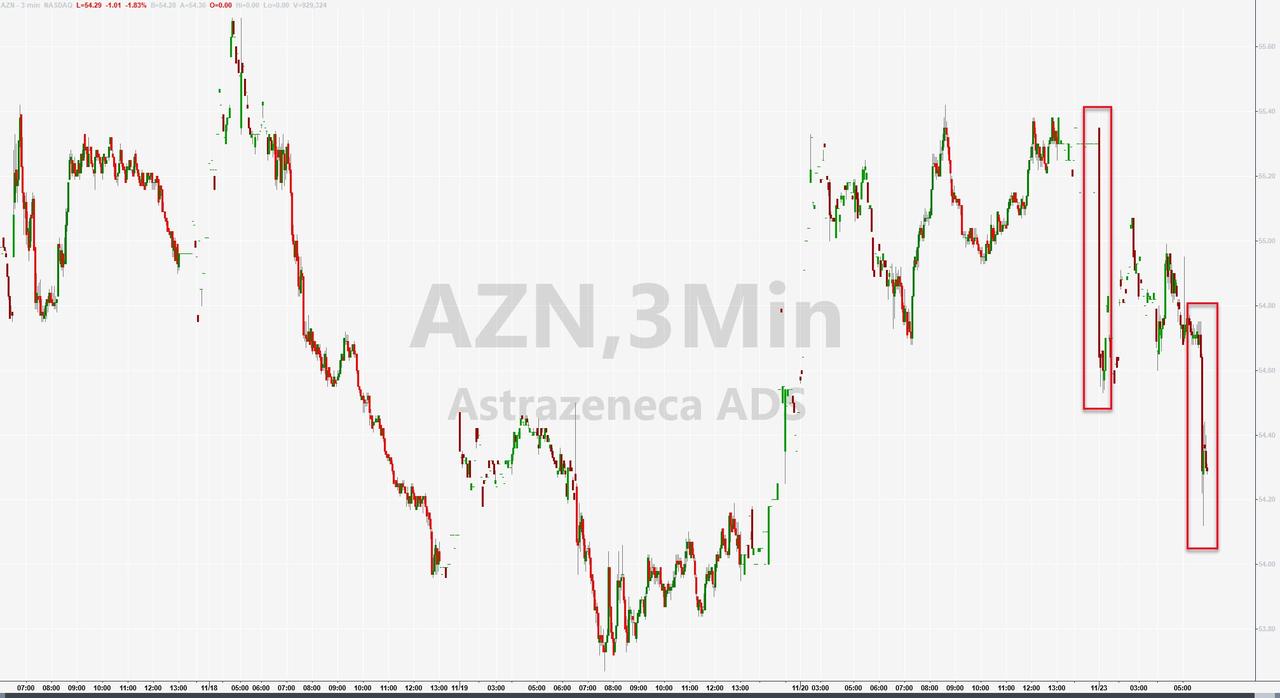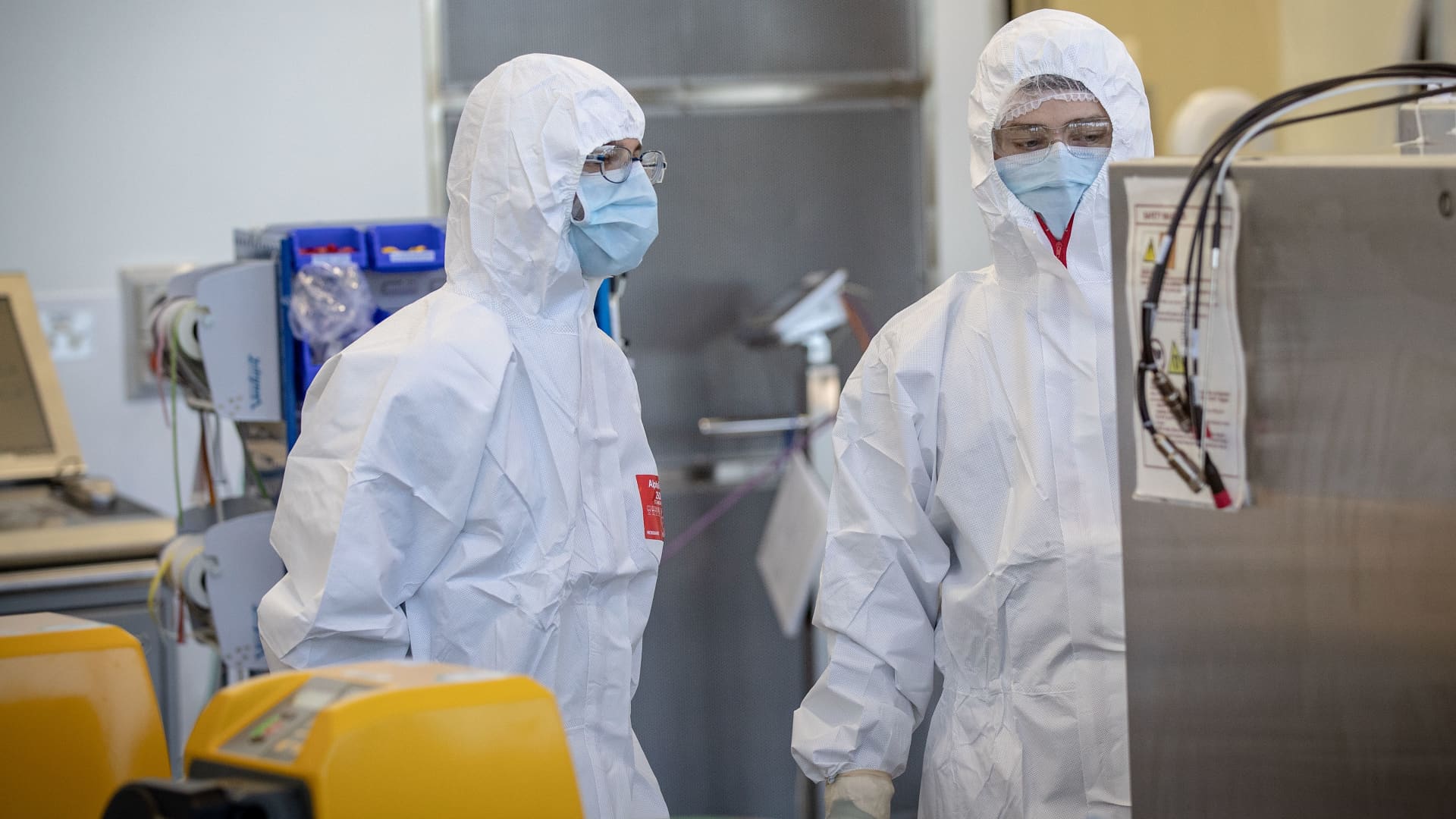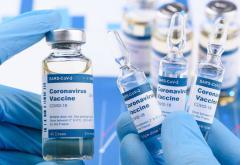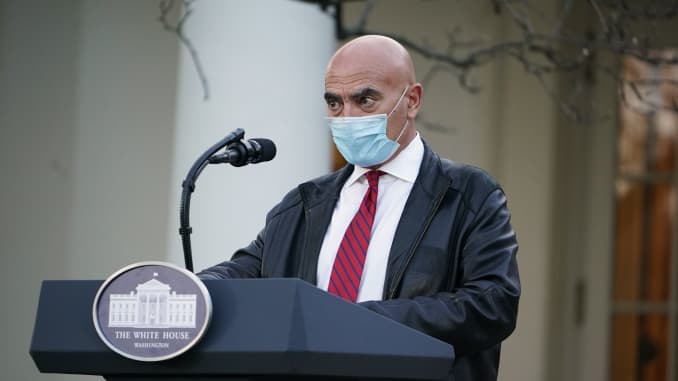I am posting this updated version of Nightwolf's research on the Pfitzer vaccine so far I will also add the new notes in the next post - this was originally posted in the bomb shelter but I have his permission to post this slightly improved version here.
note this is meant to be a FACT BASED write up not an opinion piece, in private Nightwolf doesn't think anyone should take this vaccine without at least 12 hours of observation afterward and probably be ready (if needed) to take two weeks off of work in bed because some people will react that badly.
There are also disturbing information that is coming in (which I can't talk about much) that indicates that people who have HAD COVID-19 exposure MAY have an increased risk of a "level 3 reaction." Remember Pfitzer may try to soft-peddle this with "low level 3" reactions but those don't really exit, that would be a level 2. A "temperature" in level 3 means like high fever 104, at risk of convulsions etc.
Anyway, here is what he has so far - if you copy this please leave my notes out and just post his article - thanks Melodi
-------------------------
Pfizer vaccine
This is a summary and brief explanation of the data provided by Pfizer regarding their COVID-19 vaccine, with a discussion of some of the potential questions arising or remaining. It is not intended either as a criticism or an endorsement of the Pfizer vaccine; simply a source of information.
Summary: good effectiveness; side effect profile relatively bad compared to most common vaccinations, but (as reported by Pfizer) not presenting any apparent or established risks of death or long-term disability (may well require aftercare, either actual medical or home health; numbers given and discussed below); terrible in terms of storage/transport (extreme cold temperature requirements).
The biggest concerns are: full disclosure and discussion of risks and provision of aftercare if necessary for adverse vaccine events (bad side effects); unknown and currently unknowable duration of protective effect (3 months? 3 years? A lifetime? Two weeks?); storage/transport temperature issues impairing mass distribution; and the high likelihood that many people, fully informed, will either refuse the virus or, having had a sufficiently bad reaction to their first half-dose, will not return for the second half of the immunization.
On balance: probably worthwhile in terms of risk-benefit ratio when Pfizer’s figures are mapped against the risks of death or lasting debilitation from COVID-19, if duration of protection is sufficient to warrant effort, expense, etc., and aftercare can be widely provided in case of severe adverse events.
According to Pfizer’s data:
Efficacy: 95%. This is very good.
Population tested (from
Coronavirus COVID-19 Vaccine Update: Latest Developments | Pfizer, under “Frequently Asked Questions: Why did you expand enrollment for the Phase 3 trial?”): Pfizer notes that their expanded test enrollment as of Sept. 2020 included: “adolescents as young as 16 years of age and people with chronic, stable HIV (human immunodeficiency viruses), Hepatitis C, or Hepatitis B infection. In October 2020, we received permission from the FDA to enroll adolescents as young as 12. By doing so, we are able to better understand the potential safety and efficacy of the vaccine in individuals from more ages and backgrounds”. From the same page, they report that 40.9% of the worldwide test population and 45.4% of the US-only test population were in the age group between 54 and 84; detail their efforts to ensure a spread of ethnic diversity, etc. Considering that the 54-84 age group represents the largest population of the most acutely vulnerable patients, possibly followed by people with various chronic conditions both infectious and non-, this was a good thing to establish.
Dosage: Requires two doses for full coverage. The two-dose schedule appears to be based on the need to reduce severe side effects from the vaccine. This may be a problem in many circumstances.
Storage: Requires to be kept
very cold. Dry ice or a freezer of appropriate type (capable of maintaining a constant -94 degrees F) are required for transport and storage of any sort; the vaccine loses efficacy within five days if allowed to be kept at a temperature slightly above freezing. This may be a huge problem in a wide range of circumstances.
Duration of protection: No one knows the answer to this. If the phase 3 participants have a sudden wave of COVID-19 in four months, we’ll know it only lasts three months. If, in twenty years, the phase 3 participants still have a good level of testable immunity (antibodies, presumably) in their blood, then we’ll know it lasts twenty years. Not only is the Pfizer vaccine a new drug, it is a new technology, so there is no data to make long-term predictions from.
(There is also the secondary problem of, well, it’s a coronavirus. They mutate. It’s like their national sport or something. There is a reason “curing the common cold” is a proverb…and a large percentage of “common colds” are various minor coronaviruses. So, yes, this could well end up being like the flu vaccine, a new formulation every year. Or the vaccine could give us a wider range of protection against variant strains than we know yet, in the same way that smallpox vaccination inadvertently knocked the incidence of monkeypox way down in endemic areas. We just can’t know).
Side effects: The following is taken directly from Pfizer’s press release (regarding their large phase 3 study of the vaccine):
Pfizer and BioNTech Conclude Phase 3 Study of COVID-19 Vaccine Candidate, Meeting All Primary Efficacy Endpoints | Pfizer
- Data demonstrate vaccine was well tolerated across all populations with over 43,000 participants enrolled; no serious safety concerns observed; the only Grade 3 adverse event greater than 2% in frequency was fatigue at 3.8% and headache at 2.0%
A grade 3 adverse systemic event (the generalized reactions seen in some cases after immunization – fever, malaise, swelling at the injection site or of the injected limb, etc.) is most commonly described, as in the DAIDS criteria (
https://rsc.niaid.nih.gov/sites/def...everity-of-adult-pediatric-adverse-events.pdf), as “symptoms causing inability to perform usual social or functional activities”. Clearly, even with the most objective observers in the world, there may be variations in the judgement of the clinical evaluator regarding the precise severity of symptoms as non-specific as the usual range of immunization reactions tend to be. I think, however, that it is unlikely that professionals engaged in such a trial would overstate a grade 2 reaction so far as to report it as a grade 3.
The same set of criteria applied by the same source to grade 3 adverse events of other types, to give a better sense of severity level by comparison, include the need for an operation (e.g., one reason to rate a post treatment infection as grade 3); the need for hospitalization; the need for IV fluid replacement (grade 3 vomiting, diarrhoea); and so forth.
The next level up, grade 4, can be roughly summarized as “total inability to perform any acts of self-care; permanent disability; or potentially life-threatening: urgent medical intervention required”. The most common example is severe anaphylaxis in response to the first dose of an IV medication (e.g., the sudden revelation of a hitherto unknown penicillin allergy): if the patient is not treated properly, right then, they will die. The next level after that, grade 5, consists of “we did everything we could, and we did it all right, but the original treatment we gave the patient killed them anyway”.
There is no data regarding the occurrence, if any, of grade 4 reactions to the Pfizer vaccine. It seems to be clear that no grade 5 reactions were identified.
Regarding the actual frequency of grade 3 adverse effects from this vaccine, Pfizer’s figures are separated by type of reaction. Pfizer has not released a cumulative figure (e.g., “10.7% of total patients suffered one or more level 3 side effects”). We do not know whether, for instance, some of the 3.8% with severe fatigue also suffered severe fever, severe pain and/or swelling in the injection site, etc; or whether it was 3.8% with severe fatigue plus 2% with severe fever plus…
Therefore, we can only say that at least 3.8 people in every hundred who get the shot will suffer a level 3 adverse effect of some sort. If many or all of those people do not have more than one type of level 3 adverse effect, the number could be as high as 20-25 in every hundred, although I would guess that 10 or 15% total would be more likely on the higher end.
This is an absolutely terrible side effect profile for a medication intended to be more-or-less universally administered.
Again, as a comparative: CanSino reported a 9% frequency of grade 3 adverse events (all types of event in total).
https://www.thelancet.com/journals/lancet/article/PIIS0140-6736(20)31605-6/fulltext
To give a separate evaluation of the CanSino profile in this regard: “Gary Kobinger, director of the Infectious Disease Research Center at Laval University in Quebec, questioned whether it makes sense to pursue development of the vaccine, given the problem with preexisting immunity to the Ad5 vector, and the relatively high rate of adverse events seen in the study. Most of the grade 3 reactions — the most severe — were seen in people who received the highest of two doses used in the study, though there was one report of a grade 3 fever in a person who received the lower dose. CanSino has dropped the higher dose.” (
New data offer glimpse of efficacy of Oxford-AstraZeneca Covid-19 vaccine)
The figures on adverse events caused by some other common vaccines:
Influenza: The reported relative incidence of adverse events across eight years of a selection of vaccine brands varied generally between 1.5 and 2.5%....all adverse events reported, regardless of severity (high probability of the majority being grade 1 or grade 2), in total. (
Adverse events of interest vary by influenza vaccine type and brand: Sentinel network study of eight seasons (2010–2018)) The rate of at least two of the specific severe, though not immediately life-threatening, adverse events for the Pfizer vaccine makes each of them equal to or greater than the total rate of all adverse events, of all types and severities, recorded for the influenza vaccine in this paper (Cross JW, Joy M, et al. “Adverse events of interest vary by influenza type and brand”
Vaccine 38:22,
8 May 2020, 3869-3880). In short, the patient is probably significantly more likely to suffer a grade 3 adverse event from the Pfizer vaccine than they are to, say, get a sore arm or a day of feeling mildy unwell from a flu shot.
MMR (data and quotes from WHO Information Sheet: Observed Rate of Vaccine Reactions, Measles, Mumps and Rubella, May 2014.
https://www.who.int/vaccine_safety/initiative/tools/MMR_vaccine_rates_information_sheet.pdf)
These are the reactions to MMR that WHO lists as “severe”:
Anaphylaxis (grade 4) – 3.5-10 per million doses
Febrile seizures (quite arguably grade 3 or grade 4) – as low as 1 in 1500 doses
Thrombocytopenia (ranging from grade 1 to grade 3 in the vast majority of MMR-induced cases, “clinical course is usually transient and benign”) – 1 in 30,000-40,000 vaccinated children.
In short, the side effect profile of the Pfizer vaccine is a matter of some concern. Whether it is worth a massive attempt to vaccinate everybody, or at least the industrialized world, depends on a number of factors, most unknown.
As with any drug, the risk of adverse events has to be weighed against the risk of not taking the drug. Sometimes the latter risk is very clear. If COVID-19 had the same fatality and/or disfigurement rate as Variola major (smallpox), or a fatality rate comparable to the filoviruses (Ebola, Marburg) or even Yersinia pestis (plague)
with modern treatment, there would be no question that the highest-end estimate of level 3 adverse events for the Pfizer vaccine was well, well worth the trouble. It might be massively difficult to get as many people vaccinated as need it, but with disease kill rates like that, it might be a lot more destructive and expensive not to.
The actual death rate figures for COVID-19 are difficult to establish for a lot of reasons, not least of which is the wide range of organ systems which can be affected, questions of varying criteria for `defining “COVID-19 death”, etc. However, most Western hospital reports seem to be holding somewhere in the range of 5-10% among people who have to be hospitalized. This is dire enough to be going on with, to be sure, but the main problems presented to the healthcare system are the sheer
numbers of patients in more populous areas causing system strain and possibly collapse.
We also do not know what or how long-lasting the long-term effects of COVID-19 are, if they prove to exist and be long-lasting. We have no 5-year, 10-year, etc. profile, as we do for, say, different types of cancer, because the disease hasn’t been around that long. It should be noted, however, that if one goes to the PubMed website (the primary go-to archive for all health-care professionals wanting to see the research on any given topic:
PubMed) and types in “COVID-19 long-term effects” or something of a similar nature, one will very quickly see several articles indicating a very strong concern about lasting impairment of various systems. There is also reason for concern that people who are initially asymptomatic or very mildly symptomatic may develop significantly damaging/debilitating conditions later on as a result of infection. Reports such as Chang, Lee, Hur, & Park’s documentation of lung lesions demonstrated by CT in apparently asymptomatic patients who tested positive for COVID-19 (
Chest Computed Tomography Findings in Asymptomatic Patients with COVID-19 - PubMed ; published in
Respiration 2020 Sept. 7; 1-7, online ahead of print) indicate that this factor should be considered to some degree when evaluating the risk-benefit ratio of any treatment for COVID-19.
In short, assuming that the adverse event profile released by Pfizer proves to be accurate and consistent, the risk-benefit ratio is well in favour of taking the vaccine…
if one is assured of appropriate aftercare in the event of a grade 3 adverse event and follow-up for possibly as long as a month (the usual maximum length of time for vaccination-related adverse events, though most manifest within the first seven days following the injection), and
if the duration of protection is of a reasonable length (at least until the next year’s strains start making the rounds, if this virus proves to be similar to influenza in that regard).
However, if the duration of protection turns out to be significantly shorter than hoped – less than the year necessary to, say, identify and formulate a new vaccine against that year’s dominant strains, as is the procedure with the influenza vaccines – the massive effort and expense of transport/storage, administration, and necessary aftercare for the side effect profile presented by Pfizer would cast very considerable doubt on the feasibility of this vaccination for population-wide use.
The issue of usefulness in non-industrialized countries, very remote areas, and so forth is also of very great significance when evaluating a drug that is intended to be given to masses of people in order to wipe out or at least knock down a fast-mutating virus. The vaccine will only do the industrialized world a limited amount of good if vast unvaccinated population reservoirs continue to produce new strains faster than our technology can keep up with them.
To be useful outside the industrialized world, a medicine (proven efficacy and safety profile assumed) requires two characteristics. (1) It must be very, very cheap to manufacture. (2) It must be capable of retaining its potency for at least reasonable amounts of time at room temperature – African, Indian, or South American room temperature, that is. This is why the antibiotic chloramphenicol, seldom used in the industrialized world these days (less effective and less safe than the vast array of first-, second-, and third-line options in common usage here), is so very popular in Third World medicine still: it’s cheap and it stores well at room temperature.
The Pfizer vaccine fails on this point. Which does not mean that it may not be very valuable for anyone living where there are the resources to obtain and provide the drug to all consenting citizens; but it will not do for anything approaching the hoped-for worldwide coverage unless that temperature issue can be worked out.
Finally, there are more general issues of practicality and feasibility for a mass vaccination effort regarding the known issues. Universal patient compliance cannot be expected in any case, and attempting to enforce the vaccination on a competent adult who does not consent would not only currently be illegal in most of the Western world, but it would be a direct violation of one of the four foundational “Pillars of Medical Ethics” (Non-maleficence – “Do no harm”; Benevolence – “Do good”; Equity – “Don’t discriminate”; and, crucially here, patient Autonomy – “A procedure cannot be done without the informed consent of the patient or competent adult legally responsible for them”…there are exceptions such as the “implied consent” of an emergency, when, say, you have an unconscious patient bleeding to death and no next of kin around, but basically, informed consent is essential to medical ethics as they are understood in the Western world today.
Other concerns in this regard include the reasonable likelihood that many people who have a grade 3 or even particularly unpleasant grade 2 (no figures given in Pfizer report quoted above) adverse event following on their first dose may not be willing to return for the second dose. To my knowledge, no figures have been released regarding the protection provided, if any, by taking one dose but not two. A professional website for UK doctors,
Pulse, has already reassured UK GPs that they will be paid their due fee for administering the country’s chosen COVID-19 vaccine even if the patient does not come back for their second dose (
https://www.pulsetoday.co.uk/news/c...tails-set-out-for-covid-vaccination-campaign/). From my own experiences in GP rotations during clinical training, I have to say that I consider it quite likely that many patients will not.
Stephan Grundy, Ph.D., BS (medical science)

